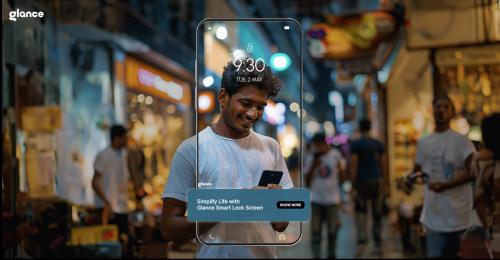Responsible AI Meets Explainable AI: Balancing Innovation and Transparency in Visual AI Systems
In the age of innovation, artificial intelligence (AI) is rapidly transforming our world. Visual AI, a subfield of AI that analyzes and interprets visual data like images and videos, plays a crucial role in this revolution. However, with immense power comes immense responsibility. Responsible AI ensures that AI systems are developed and implemented ethically, fostering trust and transparency. But how does responsible AI differ from explainable AI (XAI), and why are both crucial for the future of visual AI?
Responsible AI vs. Explainable AI
Responsible AI and Explainable AI are two sides of the same coin, both essential for building trust in visual AI systems. Let's delve deeper into how they differ and complement each other:
Responsible AI
This broader concept encompasses the entire lifecycle of AI development and deployment.
It ensures visual AI systems are:
Fair and unbiased
Responsible AI practices strive to eliminate bias in data and algorithms, leading to fair and equitable outcomes. This is particularly important in visual AI applications, where biases in training data can lead to discriminatory results.
Transparent
Users should understand how visual AI systems arrive at their decisions, promoting trust and accountability. This transparency is crucial for applications like facial recognition or medical image analysis.
Secure and private
Responsible AI prioritizes robust data security and privacy safeguards to protect user information. This is especially important when dealing with sensitive visual data.
Ethical
Responsible AI considers the broader societal impact of AI systems, ensuring they align with human values and ethical principles.
Explainable AI (XAI)
XAI focuses specifically on making the internal workings of an AI system understandable. Explainable AI techniques like feature attribution, model visualization, and counterfactual explanations help us grasp how visual AI systems interpret visual data and reach conclusions.
Explainable AI is a crucial component of responsible AI, as it provides the tools to achieve transparency and accountability.
Why Responsible AI Needs Explainable AI for Visual AI
AI systems are already being used in various sectors, from facial recognition in security systems to medical image analysis. Responsible AI practices are essential to ensure these systems are fair, and unbiased, and don't perpetuate societal inequalities.
Here's where Explainable AI plays a vital role:
Building Trust
When users understand how AI systems work, they can trust the information presented. Explainable AI fosters transparency and user confidence, which is crucial for the widespread adoption of visual AI technologies.
Identifying Bias
Explainable AI techniques can help identify potential biases in the data used to train visual AI systems. This allows developers to address these biases and ensure fair outcomes across different demographics.
Enhancing Security
By understanding how AI systems make decisions, we can identify potential security vulnerabilities and take steps to mitigate them. Responsible AI practices combined with XAI lead to secure and trustworthy visual AI applications.
Regulatory Compliance
As governments begin to regulate AI, explainability will likely become a legal requirement. Explainable AI techniques will be crucial for demonstrating compliance with responsible AI guidelines.
Continuous Improvement
Explainable AI allows developers to understand the strengths and weaknesses of their AI models, enabling targeted improvements and refinements.
Responsible AI: A Glimpse Through Glance
Glance serves as a compelling example of how responsible AI can be implemented in practice. This mobile technology application leverages AI to personalize your lock screen with relevant information, all while upholding responsible AI principles.
Here's how Glance translates responsible AI into a user-centric experience:
Relevant at a Glance
The AI engine powering Glance learns your preferences over time, ensuring the content displayed is truly relevant to your interests. This personalized experience reflects Glance's commitment to user-centric design.
Confidence in Content
Glance leverages robust safeguards to ensure the information displayed on your lock screen is accurate and reliable. This focus on data quality embodies responsible AI practices.
Peace of Mind
Glance prioritizes user well-being, fostering a secure and trustworthy lock screen experience. This commitment to user safety exemplifies responsible AI in action.
Challenges in Implementing Responsible AI and Explainable AI in Visual Systems
While the benefits of responsible AI and Explainable AI in visual systems are clear, several challenges remain:
Complexity of Visual Data
Visual AI systems often use deep learning models that are inherently complex. Making these "black box" systems explainable without sacrificing performance is an ongoing challenge.
Trade-off Between Accuracy and Explainability
In some cases, more explainable models may be less accurate. Striking the right balance is crucial for responsible AI implementation.
Data Privacy Concerns
Explaining AI decisions may sometimes require revealing sensitive information about training data. Responsible AI practices must navigate this carefully.
Lack of Standardization
There's currently no universal standard for what constitutes "sufficient" explainability in AI systems. This can make it challenging for companies to implement responsible AI consistently.
The Road Ahead: Building a Future of Responsible Visual AI
As visual AI continues to evolve, responsible AI practices and XAI techniques will be instrumental in building trust and ensuring ethical development. By prioritizing fairness, transparency, and security, we can harness the power of AI to create a brighter future.
Here's what various stakeholders can do to promote responsible AI in visual systems:
Developers and Companies
Incorporate responsible AI principles from the outset of any visual AI project.
Invest in research and development of XAI techniques specific to visual AI.
Regularly audit AI systems for bias and unfairness.
Provide clear documentation on how visual AI systems work and make decisions.
Policymakers
Develop clear guidelines and regulations for responsible AI in visual systems.
Encourage transparency and explainability in AI applications, especially in high-stakes domains.
Support research into responsible AI and XAI techniques.
Users and Consumers
Advocate for responsible AI policies and regulations.
Support companies committed to developing and deploying AI systems ethically.
Educate yourself about AI and XAI to understand how these technologies work.
Provide feedback to companies on their AI systems' performance and explainability.
Researchers
Develop new XAI techniques specifically tailored for AI systems.
Investigate the societal impacts of visual AI and propose mitigation strategies.
Collaborate across disciplines to address the ethical challenges of visual AI.
Together, we can ensure that visual AI becomes a force for good, driving innovation and progress while upholding ethical principles. The future of responsible AI is bright, and with collective effort, we can shape a world where AI empowers us all while remaining transparent, fair, and accountable.
As we move forward, it's crucial to remember that responsible AI is not a destination but a journey. It requires ongoing commitment, adaptation, and collaboration across industries, governments, and communities. By embracing both responsible AI practices and explainable AI techniques, we can unlock the full potential of visual AI while safeguarding our values and ensuring a more inclusive technological future.










Comments